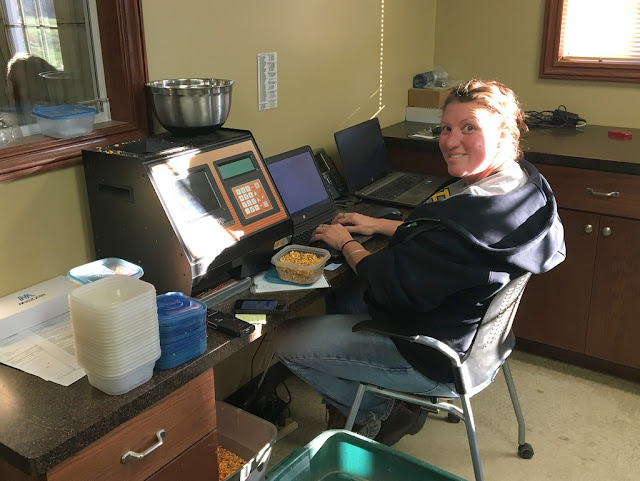So this week is the wildly popular Great Lakes Fruit and Vegetable Expo in Grand Rapids. There are people from all over the world who attend this as speakers, exhibitors and growers. AgroLiquid has exhibited here for years. I took the opportunity to attend the opening day on Tuesday.
Here is the AgroLiquid booth. With an expansion of retail partners in the fruit and vegetable markets, there is much information to share with growers.
Last year over 4200 people attended the three day event, and looks like at least that again in 2017. There are over 450 exhibitors from seed, greenhouses, chemicals, fertilizers, storage, marketing, farm marketing and of course, equipment. The NCRS has a supply of fruit and vegetable equipment for use in our plots. But like most growers, you like to see what's new and improved.
There are some give-away items at the different booths. But probably nothing as valuable as this Yeti cooler that will given away to a lucky entrant. Look at this familiar grower with the AgroLiquid cap. Hope he wins. (I say that to everyone though. And I'll be right once.)
This conference also has over 70 educational sessions, on everything from asparagus to zucchini. The apple presentations have the biggest audience, it being such a big crop and all. I attended this session since the NCRS has an apple orchard. They talked about managing pesticide residues (not really a problem here, but different import countries have different residue standards), soil biology (always a topic these days), insects (the Brown Marmorated Stink Bug, imported from Asia is a growing problem), disease management around pollination time (bees), apple storage and other topics. I thought it was a learning experience. Although nothing on fertility on Tuesday.
They had displays of different apple varieties. And this is just one of two long tables! Who knew there were so many?
Remember Jacob the AgroLiquid horticulturist at the NCRS who left to return to MSU for his PhD? I didn't see him on the day I was there, but I did see a poster of his research project. He compared application drift from an airblast sprayer (which blows out a high powered volume of mist to cover the trees) and a solid set canopy delivery system (which has delivery nozzles down in the canopy for delivery at a lower pressure from an overhead hose). These are systems for application of pest control chemicals and crop nutrition. Well he found that there is considerably less drift from the solid set canopy system compared to air blast. Who knew?
So that was a nice day talking to growers, seeing the other vendor displays, filling my head with knowledge and my stomach with tasty items from the farm market. (If you ever see a jar of Blueberry Salsa, buy it and try it! You can thank me later.)
(No really, it's good!)


















































